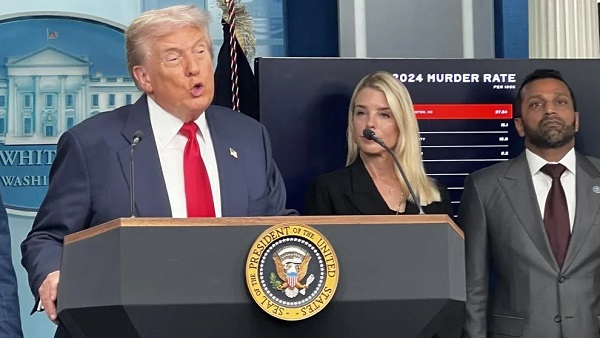Business
How big things could get done—even in Canada

From the Fraser Institute
By Philip Cross
From Newfoundland’s Muskrat Falls hydro project, to Ottawa’s Firearms Registry and the Phoenix pay system, to Montreal’s 1976 Olympics, Canada is a gold medal winner when it comes to wasting tax payer dollars. It doesn’t have to be this way.
Last year, Bent Flyvbjerg, a Danish professor of economic geography specializing in megaprojects, and Canadian journalist Dan Gardner co-authored a book How Big Things Get Done. They investigate what they coin the “Iron Law of Megaprojects,” which holds they routinely come in well over budget, far past projected deadlines, and without the projected benefits.
Unfortunately for taxpayers, the book contains numerous examples of Canadian megaprojects that follow this Law of Megaprojects. The federal government’s infamous firearms registry is a textbook template for how IT projects can go terribly wrong, ending up 590 per cent over budget. The Muskrat Falls hydro project in Newfoundland is cited as a classic demonstration of what happens when hiring a firm with little direct experience managing such a large complex project. Most famously, the 1976 Montreal Olympic Games wins the title for the largest cost overrun in Olympic history, finishing 720 per cent over budget. The authors suggest Montreal’s “Big Owe” stadium “should be considered the unofficial mascot of the modern Olympic Games.”
One thing all these Canadian examples have in common is extensive government involvement. Not that governments learned from their past mistakes. The federal government’s Phoenix pay system fiasco demonstrates that IT remains a black hole, with the government recently announcing it would abandon Phoenix after spending $3.5 billion trying to implement it. Several light train projects across the country have gone off the rails, the poster boy being the system in Ottawa, which is years behind schedule and already $2.5 billion over budget.
There are several reasons why government projects are chronically prone to failure. One is that politicians, especially late in their careers, want legacies in the form of monumental tangible projects irrespective of whether they effectively meet a public need. You can see this dynamic clearly at work today in Canada, as the Trudeau government pushes for a prohibitively expensive (probably more than $100 billion) high-speed rail connection between Windsor and Quebec City. Meanwhile, Ontario Premier Doug Ford promotes a traffic tunnel underneath Highway 401 between Brampton and Scarborough, and Quebec Premier Francois Legault revives plans for a third link connecting Quebec City to the south shore of the St. Lawrence River. While Canada clearly needs more transportation infrastructure, these projects are not the most cost-effective way of meeting the needs of commuters.
Governments deceptively deploy several tricks to help get uneconomic projects built. They routinely produce unrealistically low-cost estimates to make wasteful ego-driven projects appear affordable. Another tried and true tactic is to just “start digging a hole and make it so big, there’s no alternative to coming up with the money to fill it in,” as former San Francisco mayor Willie Brown admitted. This approach preys on the mistaken belief that large sunk costs mean scrapping a project “would be interpreted by the public as ‘throwing away’ the billions of dollars already spent” when it is actually a textbook example of throwing good money after bad.
Unlike other studies of how major infrastructure projects typically are over budget, Flyvbjerg and Gardner have some concrete recommendations on how to manage large projects that respect deadlines and budgets.
These steps include careful consideration of the actual goals of the project (airlines can meet the need for fast transport in the Windsor-Quebec corridor without the expense of high-speed rail), detailed planning and preparation followed by swift execution to minimize costly surprises (summarized by their advice to “think slow, act fast”), accounting for the cost of similar projects in the past, and breaking large projects into smaller modules to allow projects to scale back when they run into trouble. A good example of these principles at work in Canada were several oilsands projects built before 2015, when severe shortages were addressed by firms using modularity and synchronizing their work schedules to free up scarce labour and materials.
However, one major flaw in Flyvbjerg and Gardner’s analysis is their failure to understand the economics of renewable energy. They cite solar and wind projects as examples of projects that routinely finish under budget, a major factor in their declining cost. But building renewable energy is not their only cost to the energy grid, as back-up plants must be maintained for those periods when the sun is not shining or the wind is not blowing, as noted in a recent article by Bjorn Lomborg. The expense of maintaining plants that often are idle raises overall costs. This is why jurisdictions that rely extensively on renewable energy, such as Germany and California, have high energy costs that must be paid either by customers or taxpayers.
However, apart from this mistake, there is much governments and taxpayers can learn from How Big Things Get Done.
Author:
Agriculture
Supply Management Is Making Your Christmas Dinner More Expensive

From the Frontier Centre for Public Policy
By Conrad Eder
The food may be festive, but the price tag isn’t, and supply management is to blame
With Christmas around the corner, Canadians will be heading to the grocery store to pick up the essentials for a tasty Christmas feast. Milk and eggs to make dinner rolls, butter for creamy mashed potatoes, an assortment of cheeses as an appetizer, and, of course, the Christmas turkey.
All delicious. All essential. And all more expensive than they need to be because of a longstanding government policy. It’s called supply management.
Consider what a family might purchase when hosting Christmas dinner. Two cartons of eggs, two cartons of milk, a couple of blocks of cheese, a few sticks of butter, and an eight-kilogram turkey. According to Agriculture and Agri-Food Canada and Statistics Canada, that basket of goods costs a little less than $80.
Using price premiums calculated in a 2015 University of Manitoba study, Canada’s supply management system is responsible for $16.69 to $20.48 of the cost of that Christmas dinner. That’s a 21 to 26 per cent premium Canadian consumers pay on those five staples alone. Planning on making a yogurt dip or serving ice cream with dessert? Those extra costs continue to climb.
Canadians pay these premiums for poultry, dairy and eggs because of how Canada’s supply management system works. Farmers must obtain government-issued production quotas that dictate how much they’re allowed to produce. Prices are set by government bodies rather than in an open market. High tariffs block imports and restrict competition from international producers.
The costs of supply management are significant, amounting to billions of dollars every year, yet they are largely hidden, spread across millions of households’ grocery bills. Meanwhile, the benefits flow to a small number of quota-holding farmers. Their quotas are worth millions of dollars and help ensure profitable returns.
These farmers have every incentive to lobby, organize and defend the current system. Wanting special protection is one thing. Actually being given it is another. It is the responsibility of elected officials to resist such demands. Elected to represent all Canadians, politicians should unapologetically prioritize the public interest over any special interests.
Yet in June 2025, Parliament did the opposite. Rather than solve a problem that costs Canadians billions each year, members of Parliament from every party, Liberal, Conservative, Bloc, NDP and Green, unanimously approved Bill C-202, further entrenching the system that makes grocery bills more expensive at a time when families can least afford it. Bill C-202 prohibits Canada from offering any further market access concessions on supply-managed sectors in future trade negotiations.
This decision is even more disappointing when we consider what other nations have already accomplished. Australia and New Zealand demonstrate that removing supply management is not only possible but beneficial.
Australia operated a dairy quota system for decades before abolishing it in 2000. New Zealand began dismantling its dairy supply management regime in 1984 and completed the process in 2001. Both countries found that competitive markets provided their citizens with the access to goods they needed without the hidden costs. If these countries could eliminate supply management, so can Canada.
As the government scrambles to combat the rising cost of living, one of the simplest and most effective solutions continues to be ignored. Eliminating supply management. Removing the quotas, the price controls and the tariffs would allow market competition to do what it does across every other product category. It delivers choice, quality and affordability.
As Canadians gather for Christmas dinner, the feast may be delicious, but it will once again be more expensive than it needs to be. That is the cost of supply management, and Canadians should no longer have to bear it.
Conrad Eder is a policy analyst at the Frontier Centre for Public Policy.
Business
Taxing food is like slapping a surcharge on hunger. It needs to end

This article supplied by Troy Media.
Cutting the food tax is one clear way to ease the cost-of-living crisis for Canadians
About a year ago, Canada experimented with something rare in federal policymaking: a temporary GST holiday on prepared foods.
It was short-lived and poorly communicated, yet Canadians noticed it immediately. One of the most unavoidable expenses in daily life—food—became marginally less costly.
Families felt a modest but genuine reprieve. Restaurants saw a bump in customer traffic. For a brief moment, Canadians experienced what it feels like when government steps back from taxing something as basic as eating.
Then the tax returned with opportunistic pricing, restoring a policy that quietly but reliably makes the cost of living more expensive for everyone.
In many ways, the temporary GST cut was worse than doing nothing. It opened the door for industry to adjust prices upward while consumers were distracted by the tax relief. That dynamic helped push our food inflation rate from minus 0.6 per cent in January to almost four per cent later in the year. By tinkering with taxes rather than addressing the structural flaws in the system, policymakers unintentionally fuelled volatility. Instead of experimenting with temporary fixes, it is time to confront the obvious: Canada should stop taxing food altogether.
Start with grocery stores. Many Canadians believe food is not taxed at retail, but that assumption is wrong. While “basic groceries” are zero-rated, a vast range of everyday food products are taxed, and Canadians now pay over a billion dollars a year in GST/HST on food purchased in grocery stores.
That amount is rising steadily, not because Canadians are buying more treats, but because shrinkflation is quietly pulling more products into taxable categories. A box of granola bars with six bars is tax-exempt, but when manufacturers quietly reduce the box to five bars, it becomes taxable. The product hasn’t changed. The nutritional profile hasn’t changed. Only the packaging has changed, yet the tax flips on.
This pattern now permeates the grocery aisle. A 650-gram bag of chips shrinks to 580 grams and becomes taxable. Muffins once sold in six-packs are reformatted into three-packs or individually wrapped portions, instantly becoming taxable single-serve items. Yogurt, traditionally sold in large tax-exempt tubs, increasingly appears in smaller 100-gram units that meet the definition of taxable snacks. Crackers, cookies, trail mixes and cereals have all seen slight weight reductions that push them past GST thresholds created decades ago. Inflation raises food prices; Canada’s outdated tax code amplifies those increases.
At the same time, grocery inflation remains elevated. Prices are rising at 3.4 per cent, nearly double the overall inflation rate. At a moment when food costs are climbing faster than almost everything else, continuing to tax food—whether on the shelf or in restaurants—makes even less economic sense.
The inconsistencies extend further. A steak purchased at the grocery store carries no tax, yet a breakfast wrap made from virtually the same inputs is taxed at five per cent GST plus applicable HST. The nutritional function is not different. The economic function is not different. But the tax treatment is entirely arbitrary, rooted in outdated distinctions that no longer reflect how Canadians live or work.
Lower-income households disproportionately bear the cost. They spend 6.2 per cent of their income eating outside the home, compared with 3.4 per cent for the highest-income households. When government taxes prepared food, it effectively imposes a higher burden on those often juggling two or three jobs with limited time to cook.
But this is not only about the poorest households. Every Canadian pays more because the tax embeds itself in the price of convenience, time and the realities of modern living.
And there is an overlooked economic dimension: restaurants are one of the most effective tools we have for stimulating community-level economic activity. When people dine out, they don’t just buy food. They participate in the economy. They support jobs for young and lower-income workers. They activate foot traffic in commercial areas. They drive spending in adjacent sectors such as transportation, retail, entertainment and tourism.
A healthy restaurant sector is a signal of economic confidence; it is often the first place consumers re-engage when they feel financially secure. Taxing prepared food, therefore, is not simply a tax on convenience—it is a tax on economic participation.
Restaurants Canada has been calling for the permanent removal of GST/HST on all food, and they are right. Eliminating the tax would generate $5.4 billion in consumer savings annually, create more than 64,000 foodservice jobs, add over 15,000 jobs in related sectors and support the opening of more than 2,600 new restaurants across the country. No other affordability measure available to the federal government delivers this combination of economic stimulus and direct relief.
And Canadians overwhelmingly agree. Eighty-four per cent believe food should not be taxed, regardless of where it is purchased. In a polarized political climate, a consensus of that magnitude is rare.
Ending the GST/HST on all food will not solve every affordability issue but it is one of the simplest, fairest and most effective measures the federal government can take immediately.
Food is food. The tax system should finally accept that.
Dr. Sylvain Charlebois is a Canadian professor and researcher in food distribution and policy. He is senior director of the Agri-Food Analytics Lab at Dalhousie University and co-host of The Food Professor Podcast. He is frequently cited in the media for his insights on food prices, agricultural trends, and the global food supply chain.
Troy Media empowers Canadian community news outlets by providing independent, insightful analysis and commentary. Our mission is to support local media in helping Canadians stay informed and engaged by delivering reliable content that strengthens community connections and deepens understanding across the country.
-

 Business1 day ago
Business1 day agoArgentina’s Milei delivers results free-market critics said wouldn’t work
-

 Business2 days ago
Business2 days agoState of the Canadian Economy: Number of publicly listed companies in Canada down 32.7% since 2010
-

 espionage21 hours ago
espionage21 hours agoCarney Floor Crossing Raises Counterintelligence Questions aimed at China, Former Senior Mountie Argues
-

 Business16 hours ago
Business16 hours agoTaxing food is like slapping a surcharge on hunger. It needs to end
-

 International2 days ago
International2 days agoDOJ fails to fully comply with Friday deadline for Epstein files release
-

 Alberta2 days ago
Alberta2 days agoAlberta’s new diagnostic policy appears to meet standard for Canada Health Act compliance
-

 Bruce Dowbiggin2 days ago
Bruce Dowbiggin2 days agoHunting Poilievre Covers For Upcoming Demographic Collapse After Boomers
-

 Health7 hours ago
Health7 hours agoFDA warns ‘breast binder’ manufacturers to stop marketing to gender-confused girls





